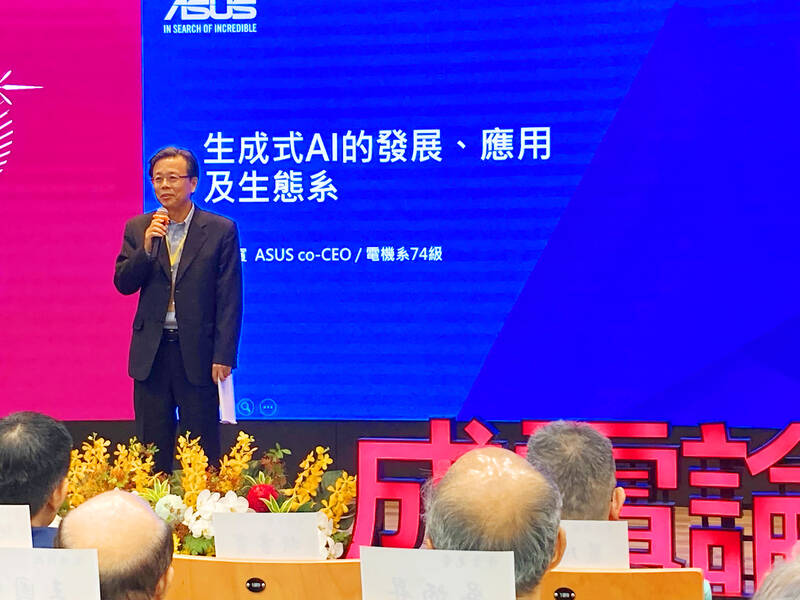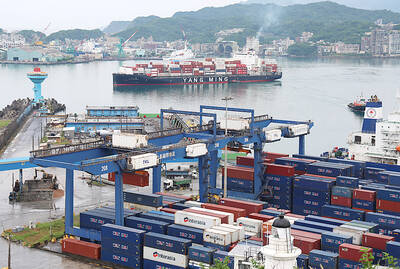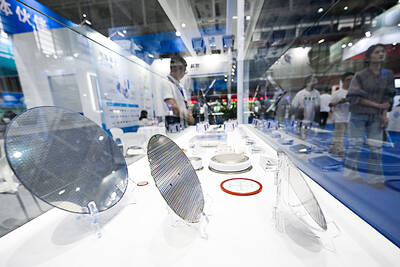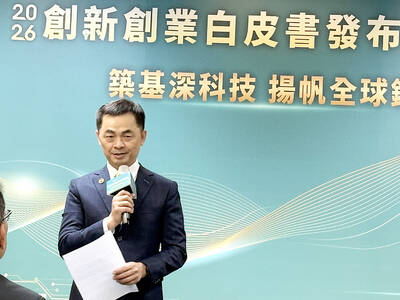Asustek Computer Inc (華碩) yesterday said it plans to roll out its first computers with artificial-intelligence (AI) capabilities next year, jumping on the trend of generative AI, but the PC maker expects that this new breed of PC would only make up a marginal share of the overall PC market by 2025.
As generative AI algorithms are to be increasingly deployed on edge computing devices for daily use rather than on cloud-based servers, Asustek said it expects that AI-enabled PCs and smartphones would become available on the market next year. Embracing the era of AI, smartphone chip designer MediaTek Inc (聯發科) earlier this month launched its new flagship processor, the Dimensity 9300, incorporating a generative AI engine and bringing large-language-model applications to smartphones, he said.
The AI PCs are to capture a single-digit percentage of overall PC shipments next year, company co-CEO Samson Hu (胡書賓) told reporters on the sidelines of an annual technology forum organized by the alumni association of the Department of Electrical Engineering at National Cheng Kung University in Tainan.

Photo: Lisa Wang, Taipei Times
Hu was one of five speakers during the forum, themed on generative AI’s development, applications and ecosystem. The forum focuses on exploring new generative AI business opportunities for Taiwanese companies from memorychip makers, PC makers and chip designers, as well as neural processing unit (NPU) developers.
“As AI PCs are widely considered an important trend, not only Asustek, but basically every PC vendor is mulling unveiling their own models next year,” Hu said.
First-wave AI PCs might be equipped with Intel Corp’s Meteor Lake CPU, with its embedded NPU, to deliver AI applications developed by about 300 independent software vendors (ISV) using Intel’s OpenVino development tools, Hu said.
Those ISVs include Taiwan’s CyberLink Corp (訊連科技).
Intel is scheduled to launch its Meteor Lake processor next month.
However, some might only consider defining computers capable of executing Microsoft Corp’s generative AI tools for enterprise users — Microsoft365 Copilot — as AI PCs, Hu said.
No consensus has been reached by those in the technology industry about how to define an AI PC, he said.
An AI PC should carry a higher price tag than standard PCs, given that it would be equipped with more advanced processors for AI algorithms and greater memory.
As AI PCs are still in their infancy, it might take some time for them to reach a double-digit percentage penetration rate beyond 2025, Hu said.
That is despite Intel projecting worldwide AI PC shipments would climb to 100 million units within two years.
The uptake of AI PCs would largely depend on how much benefit these powerful PCs would bring to users’ daily life and work, Hu said.
Moreover, time would be needed for consumers to adapt to using new applications, he added.
The introduction of AI PCs would not be a key factor in stimulating PC demand next year, market researcher TrendForce Corp (集邦科技) said in a report last week.
Instead, most upgrades to AI PC devices would be part of the business equipment replacement cycle projected for next year, it said.
Rather, AI PCs would mostly be adopted by enterprises and content creators, given the high price tags for hardware and software upgrades, the researcher said.
Global notebook computer shipments are to resume 3.2 percent year-on-year growth to 172 million units next year, after an annual contraction of 10.2 percent to 167 million units this year, TrendForce said.
For the average consumers, it would be a challenge to rapidly drive demand for AI PCs, as there is a lack of killer applications, and existing PCs offer a wider range of cloud-AI applications for daily life and entertainment applications, TrendForce said.

Taiwan’s exports soared 56 percent year-on-year to an all-time high of US$64.05 billion last month, propelled by surging global demand for artificial intelligence (AI), high-performance computing and cloud service infrastructure, the Ministry of Finance said yesterday. Department of Statistics Director-General Beatrice Tsai (蔡美娜) called the figure an unexpected upside surprise, citing a wave of technology orders from overseas customers alongside the usual year-end shopping season for technology products. Growth is likely to remain strong this month, she said, projecting a 40 percent to 45 percent expansion on an annual basis. The outperformance could prompt the Directorate-General of Budget, Accounting and

Two Chinese chipmakers are attracting strong retail investor demand, buoyed by industry peer Moore Threads Technology Co’s (摩爾線程) stellar debut. The retail portion of MetaX Integrated Circuits (Shanghai) Co’s (上海沐曦) upcoming initial public offering (IPO) was 2,986 times oversubscribed on Friday, according to a filing. Meanwhile, Beijing Onmicro Electronics Co (北京昂瑞微), which makes radio frequency chips, was 2,899 times oversubscribed on Friday, its filing showed. The bids coincided with Moore Threads’ trading debut, which surged 425 percent on Friday after raising 8 billion yuan (US$1.13 billion) on bets that the company could emerge as a viable local competitor to Nvidia

BARRIERS: Gudeng’s chairman said it was unlikely that the US could replicate Taiwan’s science parks in Arizona, given its strict immigration policies and cultural differences Gudeng Precision Industrial Co (家登), which supplies wafer pods to the world’s major semiconductor firms, yesterday said it is in no rush to set up production in the US due to high costs. The company supplies its customers through a warehouse in Arizona jointly operated by TSS Holdings Ltd (德鑫控股), a joint holding of Gudeng and 17 Taiwanese firms in the semiconductor supply chain, including specialty plastic compounds producer Nytex Composites Co (耐特) and automated material handling system supplier Symtek Automation Asia Co (迅得). While the company has long been exploring the feasibility of setting up production in the US to address

OPTION: Uber said it could provide higher pay for batch trips, if incentives for batching is not removed entirely, as the latter would force it to pass on the costs to consumers Uber Technologies Inc yesterday warned that proposed restrictions on batching orders and minimum wages could prompt a NT$20 delivery fee increase in Taiwan, as lower efficiency would drive up costs. Uber CEO Dara Khosrowshahi made the remarks yesterday during his visit to Taiwan. He is on a multileg trip to the region, which includes stops in South Korea and Japan. His visit coincided the release last month of the Ministry of Labor’s draft bill on the delivery sector, which aims to safeguard delivery workers’ rights and improve their welfare. The ministry set the minimum pay for local food delivery drivers at